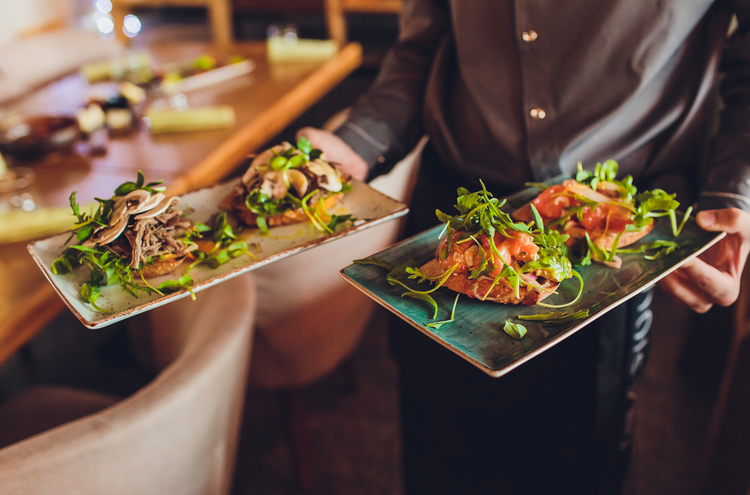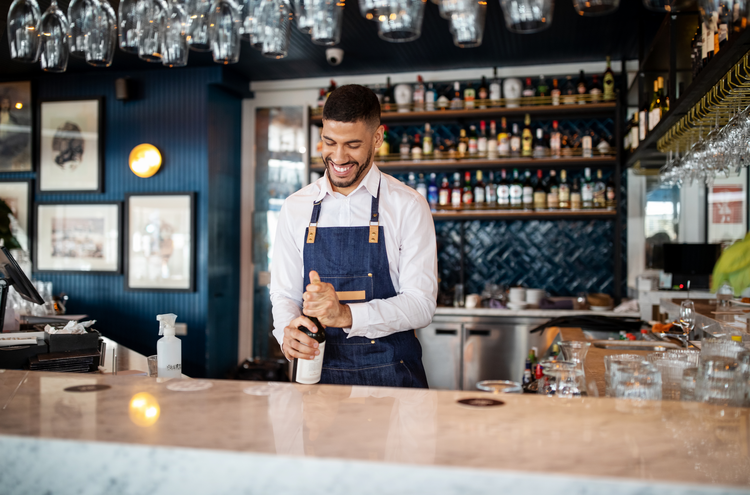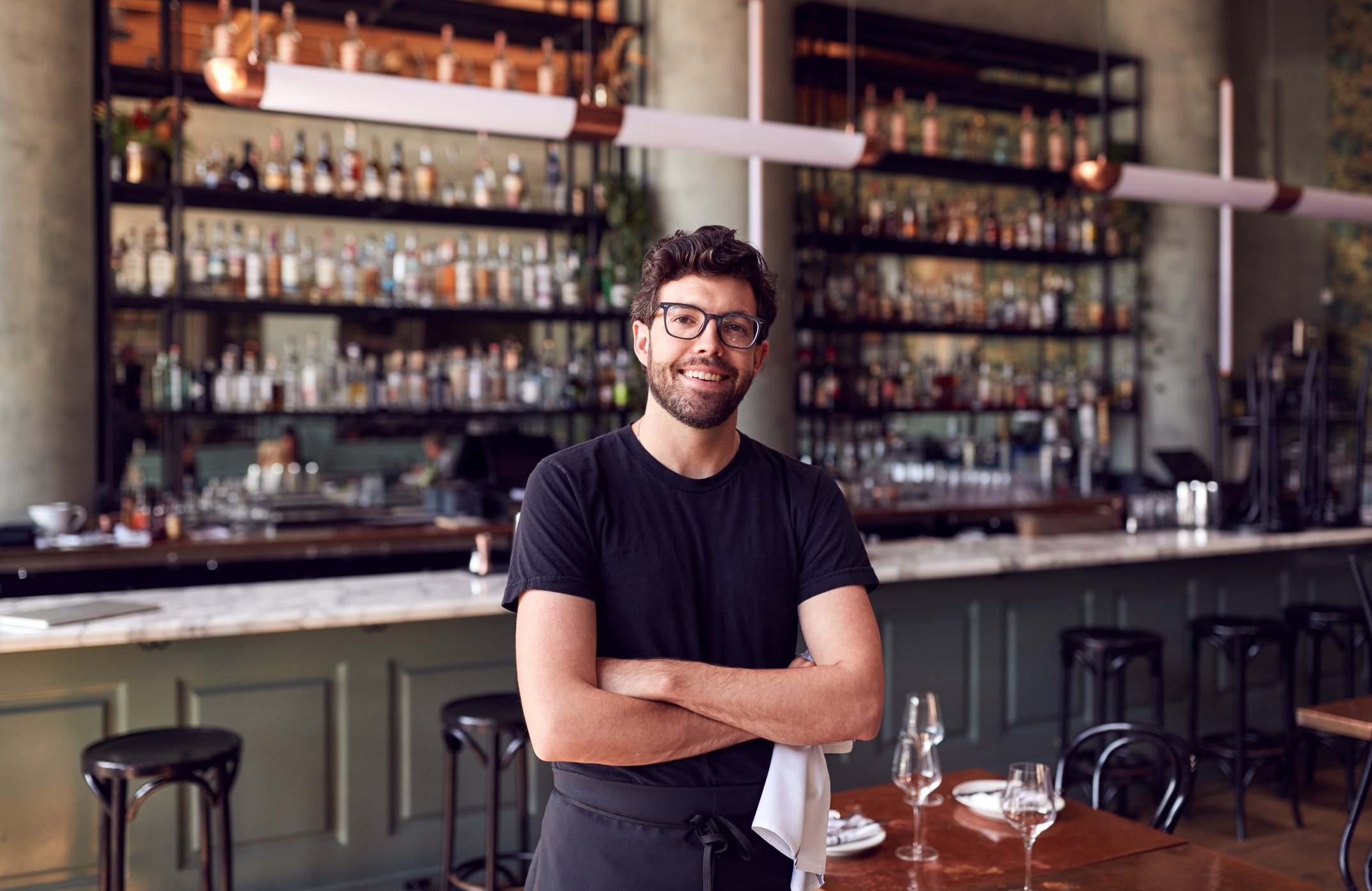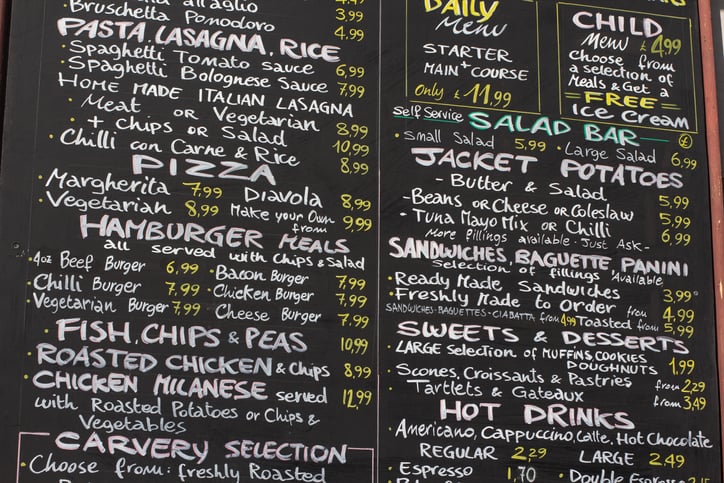Whether you run a tiny ten-seat diner or a massive food hall, restaurants are often pillars of the community.
To keep patrons streaming into your dining room, it’s worth keeping up with restaurant trends as best you can. While some transformative ideas require an upfront investment, others only ask you to stretch your imagination.
From minor menu changes to strategic shifts, here are seven trends to consider incorporating into your restaurant business plan to help your business thrive in the coming year and beyond.
#1 Incorporate small plates
These past few years have seen a shift toward small shared plates in restaurants of all types. Instead of each person ordering a main course for themselves, diners can instead choose to sample a collection of appetizers and entrées and share them as a table.
There are several reasons to try swapping smaller, shareable plates with one-person entrées.
For one, the more dishes a new (or returning) customer can try, the more likely they are to find that wow bite that makes them want to come back for more. Additionally, the dining experience changes to a more community-oriented, family-style meal.
To take the small plate idea one step further, consider piecing together a tasting menu. Multi-course meals offer diners a memorable experience and allow your head chef to flex their creative muscles.
#2 Add drink pairings
The saying “eat, drink, and be merry” includes food and beverage for a reason—the two go hand in hand. The current trend of curating a list of suggested wines, cocktails, or mocktails to complement each item on the menu caters to the crowd looking for a fine dining experience rather than just a tasty meal.
By recommending drink pairings for each dish—whether à la carte or as part of a multi-course menu—you may also encourage some diners to purchase a drink or two when they wouldn’t otherwise. Ultimately, this strategy can lead to an increase in average check size among guests.
Of course, coming up with drink pairings isn’t as easy as picking your favorite libation, and you may need to enlist the help of a sommelier or experienced bartender. But the extra expense and effort can be well worth it, providing a more reliable revenue stream long-term. Creating a more well-rounded dining experience can make your restaurant a destination.
#3 Host special events
With hundreds of dine-in restaurants to choose from—and even more options thanks to food delivery services—diners have more choices than ever. How do you convince them to come to your restaurant? Once again, it’s all about creating an experience that makes it worth leaving the house.
One trend that aims to bring guests back into restaurants involves setting up special events. Depending on your establishment, you may want to look into offering:
- A guest menu from another chef
- A themed dinner party
- A local beer or wine tasting
- A cooking class
- Live music series
By making your restaurant a go-to spot for more than just food and drinks, you increase your chance of attracting diners that would otherwise have never set foot in your establishment.
With that said, part of successful event planning is promoting the occasion. Along with more conventional advertising methods like posters and email invites, you can also leverage Nextdoor to reach more local foodies.
#4 Leverage technology
As the food service industry continues to deal with staffing troubles, technology will play a pivotal role. By harnessing new and existing tech, you can develop a more efficient workflow for you and your team. Here are a few technological restaurant industry trends to look into:
- Food pickup lockers - Curbside pickup was a blessing during shutdowns, but it’s not the most effective option for food pickup since coordinating between staff and customers isn’t always a breeze. To combat the lost time that comes with food pickup, some restaurants—such as the Houston, Texas-based spot Gatlin’s BBQ — are now turning to food lockers. These heated or cooled boxes keep the food safe and at the optimal temperature until the customer arrives, at which point they enter their unique code to receive their meal.
- On-table ordering and payment – QR code menus have gone from unexpected to ubiquitous. And now that diners are familiar with scanning codes on their smartphones, making the jump to other time-saving uses for QR codes is easy. There are now services that allow you to create table-specific codes. Customers can scan their code to browse the restaurant menu, order, and even pay their bills — all of which frees up employee time.
- Server call buttons – Silent buzzers let diners call their server over when they need a top-up or the bill. A table-side button allows you to staff more efficiently, as servers don’t need to check on their seatings constantly. At the same time, this simple technology improves the dining experience. Customers can receive assistance when they want it and can enjoy their meals in peace when they don’t.
- Restaurant pagers – More fast-casual restaurants are turning to pagers as a convenient way to manage ordering and seating. With a pager, a customer orders at a front desk or kiosk, pays for their meal, and receives a small device, after which they can take their seat. The pager alerts the diner when their food is ready, and they can walk up to grab their meal from the prep area, eliminating the need for a dedicated food runner.
These ideas—and many more like them—represent the beginning of the average restaurant’s shift to automation. Even if you’re not tech-savvy, you can likely find ways to leverage these easy-to-use solutions.
#5 Offer to-go meal kits
Take-out has long been a staple for restaurants looking to increase their revenue without moving to a larger space. But traditional take-out involves several compromises. By the time diners return home, dishes may have gone cold. What’s more, plating and presentation often take a backseat to convenience when food comes in styrofoam containers.
To-go meal kits—packages that provide all the ingredients and instructions a diner needs to make a restaurant-quality feast at home—offer an alternative experience. These DIY kits combine the excitement of a sit-down meal with the at-home comfort of take-out.
The “assemble it yourself” kit was all the rage during dining room closures or lockdowns when diners wanted to eat a fantastic meal but didn’t want to leave the house. However, these at-home kits cater to more than just the crowd-averse. They may also appeal to customers who:
- Want to have a few drinks with their meal (and don’t have transit as an option)
- Enjoy or want to experiment with cooking
- Hope to save a few dollars on tips and service fees
If you think your restaurant may not be suited to this type of experience, think again. Every kind of restaurant can—and does—offer these at-home packages, from cozy mom-and-pop cafés to Michelin-starred restaurants like NYC’s Eleven Madison Park. All it takes is a little creativity.
#6 Simplify your menus
As global supply chains continue to feel the effects of the COVID-19 pandemic, sourcing varied ingredients remains a challenge. Obtaining more exotic foods or out-of-season produce can be time-consuming, costly, or both. As such, some restaurants have been paring back their menus to deal with these obstacles, resulting in a 10% drop in total menu items in recent times.
Reducing the number of dishes you offer—and simplifying the dishes themselves—allows you to save time on prep and money on ingredients.
Offering fewer options also allows you to focus on a few core dishes. As long as you continue to produce delicious, high-quality meals, your patrons are unlikely to miss the few side dishes you cut from the menu.
#7 Source local ingredients
Today’s customers look for sustainability in everything they do—and that includes eating at restaurants. In fact, a 2022 poll by the National Restaurant Association revealed that 38% of diners are more likely to eat at a restaurant with locally-sourced healthy options.
Sourcing in-season food from local farms comes with numerous benefits, including:
- Cooking with fresher, often organic ingredients
- Eliminating the environmental impact of transporting food long distances
- Supporting farmers in your community
- Encouraging sustainable agriculture
- Gaining a transparent look into the growing process
When you can follow a trend and do your part in protecting the environment, it’s certainly worth switching to local suppliers.
With Nextdoor, success is always on the menu
As the food service industry continues to change, there will no doubt be new restaurant trends to watch and implement. It’s all part of the excitement of owning or managing a restaurant.
With that said, staying on top of local and national trends can be challenging. However, there’s one way to ensure you’re always up-to-date on what your customers want: Ask them.
Using a neighborhood platform like Nextdoor, you can connect with local diners and find out exactly what they’re looking for. When you claim your free Nextdoor Business Page, you gain access to a vibrant community of foodies, food service workers, and happy hour hunters that can help you keep your restaurant at the forefront of new trends.
Claim your page today to see how Nextdoor helps connect like-minded neighbors.






